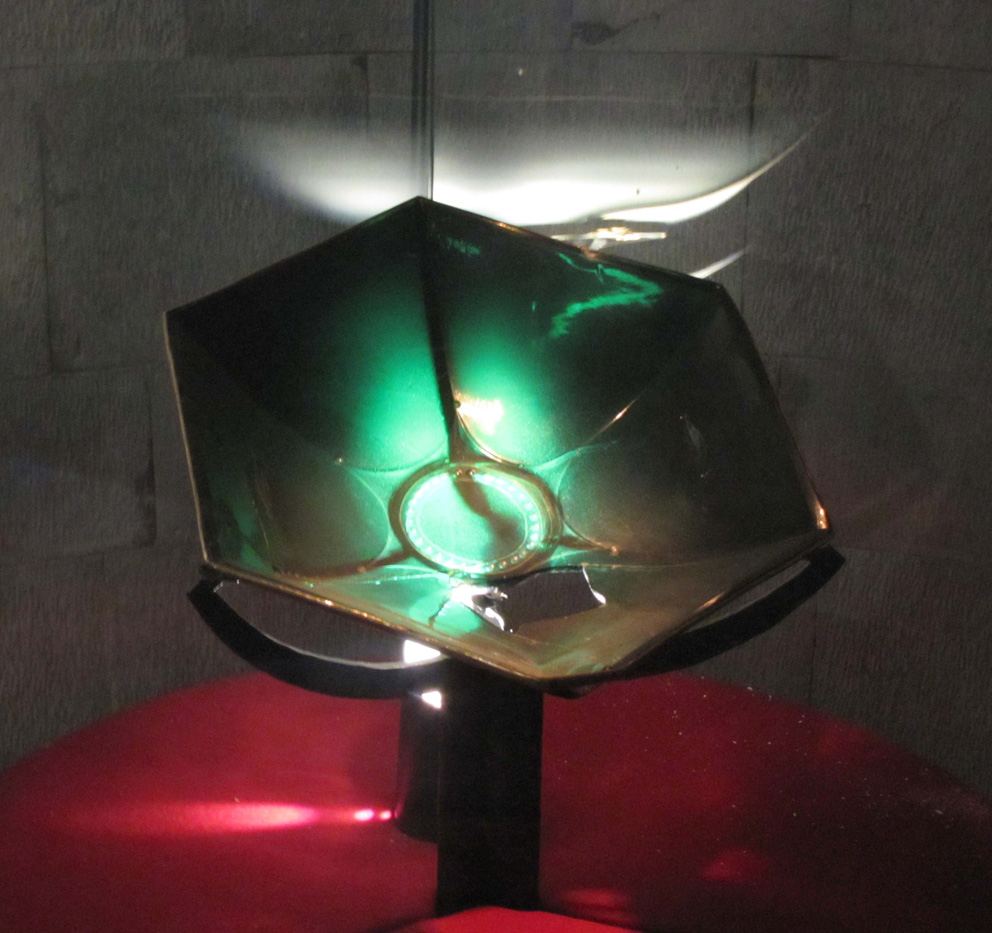
Click here to view image
Syrian manufacture, 1st century AD
Manufacture
Glass, 9 x 40 cm
The dish, for centuries thought to be emerald, was actually made by pouring molten green glass into a hexagonal mould. Traditionally it was considered the Holy Grail, or the dish used by Christ to consume the paschal lamb with the disciples during the Last Supper. It was produced in ancient Syria, probably around the first century AD. (but this dating is disputed), and according to most sources it was brought to Genoa by Guglielmo Embriaco following the conquest of Caesarea in 1101, or in the period of the First Crusade. In the past, as a precious relic, it was shown in the Cathedral only on the first day of Lent. At the beginning of 19th century Napoleon had it brought to Paris, where it was examined and its true nature discovered, it was probably during its return trip, between Turin and Genoa, that it was broken. The metal structure that now holds it together dates to the 1950s.
Loans
Genoa, Musum of St. Augustine
from 19/03/2016 to 26/06/2016
for the exhibition “Genova nel Medioevo. Una capitale del Mediterraneo al tempo degli Embriaci”



